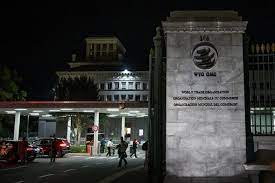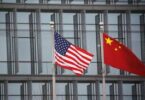Dr. Majid Rafizadeh
What came to be known as the “greatest trade agreement in history” was signed in Marrakesh, Morocco, 29 years ago on Saturday during a gathering of representatives from more than 120 countries. The Marrakesh Agreement led to the creation of the World Trade Organization, whose membership has now grown to 164 states and organizations. For 2023-2024, the World Trade Organization General Council has selected Saudi Arabia’s Ambassador to the WTO Saqer Abdullah Almoqbel to chair its Trade Policy Review Body.
It took a significant amount of political capital to establish the WTO, which is considered to be the largest international economic body in the world. It is the successor to the General Agreement on Tariffs and Trade, which was founded after the Second World War by a multilateral treaty signed by 23 countries in order to enhance economic cooperation between nations.
Several rounds of negotiations, including the Kennedy and Tokyo Rounds, led to agreements on reducing tariffs and removing non-tariff barriers. Due to globalization, the Uruguay Round of negotiations between 1986 and 1994 expanded the trading system to include other areas, such as intellectual property rights and trade in services. This led to the Marrakesh Agreement and the establishment of the WTO.
“The agreements you will sign here this week mean opportunities to expand trade, economic growth and employment,” said Peter Sutherland, the last GATT director-general and the first WTO director-general, at the opening of the Marrakesh meeting. “They mean opportunities to promote sustainable development. And they also mean an opportunity — the most significant one we have had for 50 years — to build a new basis for global economic cooperation.”
Nearly 20 years after its establishment, the first multilateral agreement was reached in 2013 — the Trade Facilitation Agreement, which aimed to lower the cost of international trade. The WTO estimated that this would add more than half a percentage point to annual global gross domestic product. It stated: “Computable general equilibrium simulations predict export gains from the TFA of between $750 billion and well over $1 trillion dollars per annum, depending on the implementation time frame and coverage. Over the 2015-30 horizon, implementation of the TFA will add around 2.7 percent per year to world export growth and more than half a per cent per year to world GDP growth.”
One of the criticisms of the WTO is linked to the length of time that is often required to reach a major multilateral agreement. But this is partially due to the fact there are 164 members and it is natural that reaching a consensus — with each member having different economic goals and objectives — would be inherently difficult. Unlike the UN Security Council, whose five permanent members (the US, Russia, China, the UK and France) can vote to pass a resolution, the agreement of two-thirds of WTO members is required to ratify a multilateral agreement. On the other hand, when a multilateral agreement is reached at the WTO, it is more likely to be effective in its enforcement and implementation, and it is more likely to be a firm and durable agreement because it was accepted by all of its members, rather than being imposed by a few powerful states.
One solution that could enhance the functionality of the WTO would be to encourage plurilateral agreements, which are reached by fewer members. These are agreements that do not require ratification from non-signatory members. They are also more specific in nature. What usually happens after such agreements are reached is that other member states subsequently begin to join.
For example, the Information Technology Agreement, which aims to reduce taxes and tariffs on information technology products, was first concluded by only 29 participants at the 1996 Singapore Ministerial Conference. But the number of participants has since grown to 82, accounting for more than 95 percent of global trade in IT products. According to a 2017 study in the World Trade Review, the Information Technology Agreement and its expansion was “the most successful attempt at trade liberalization under the auspices of the WTO since its inception in 1995.”
Finally, the role that the WTO plays in resolving disputes should not be disregarded or underestimated. If not resolved properly, trade disputes can lead to political conflicts or to countries increasing tariffs or adopting protectionist policies that only harm their own economic growth. This was witnessed during the Great Depression of the 1930s. The WTO states that it has “one of the most active interest dispute settlement mechanisms in the world. Since 1995, 616 disputes have been brought to the WTO and over 350 rulings have been issued.”
In a nutshell, international trade stimulates economic growth and increases GDP. In spite of their critics, international organizations such as the WTO are needed to facilitate global trade and to prevent trade disputes between nations from spiraling out of control and turning into political conflicts or even military confrontations.







